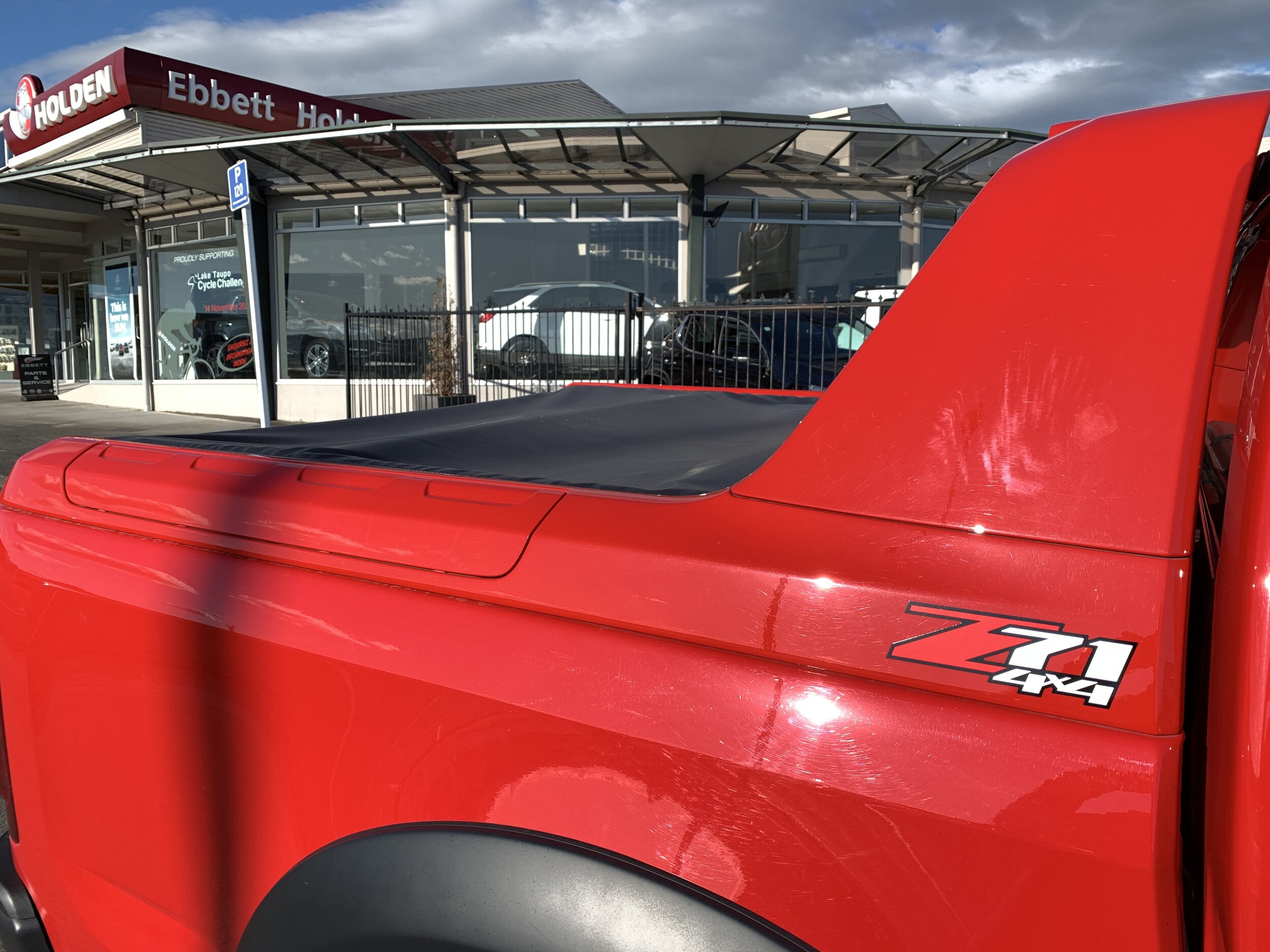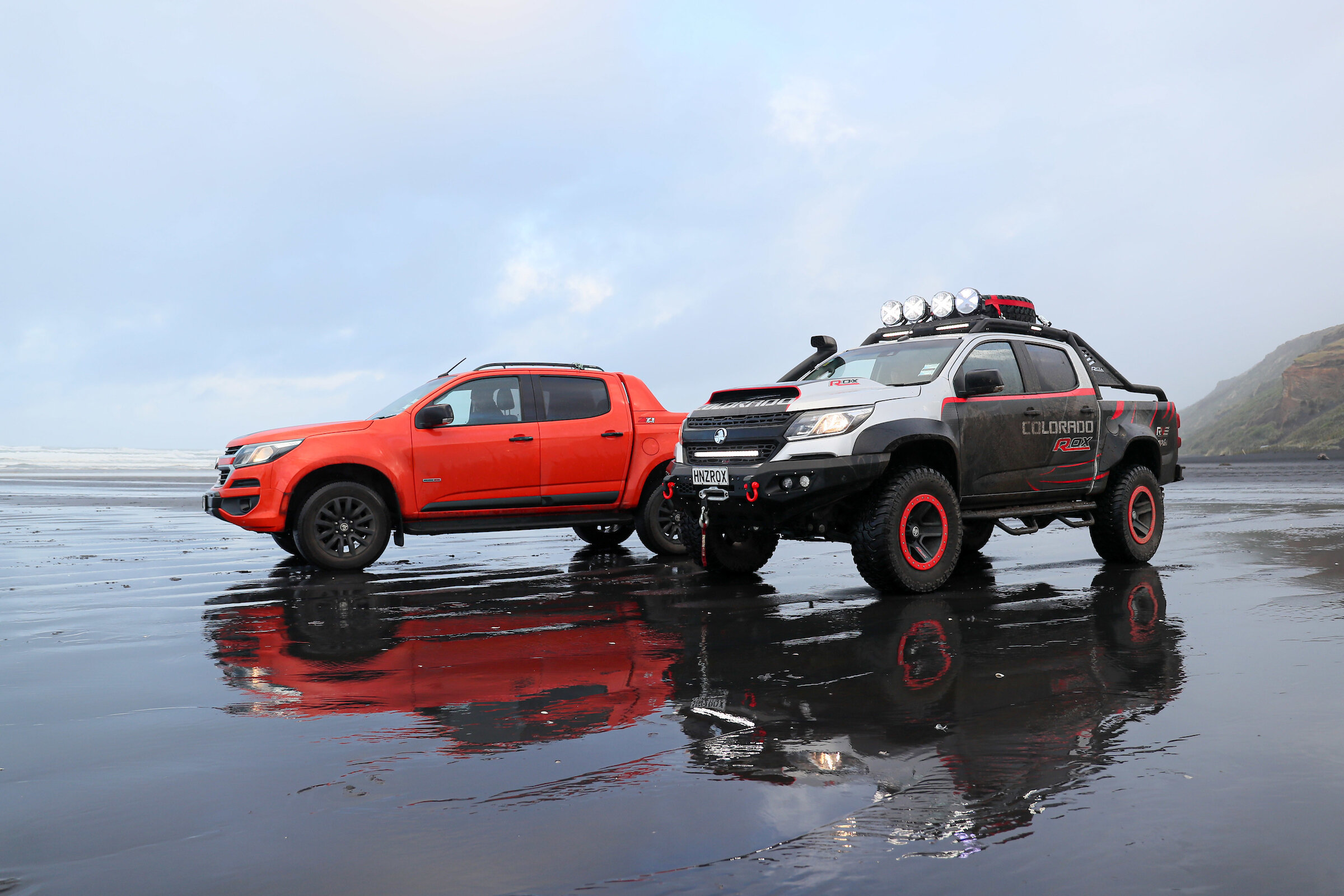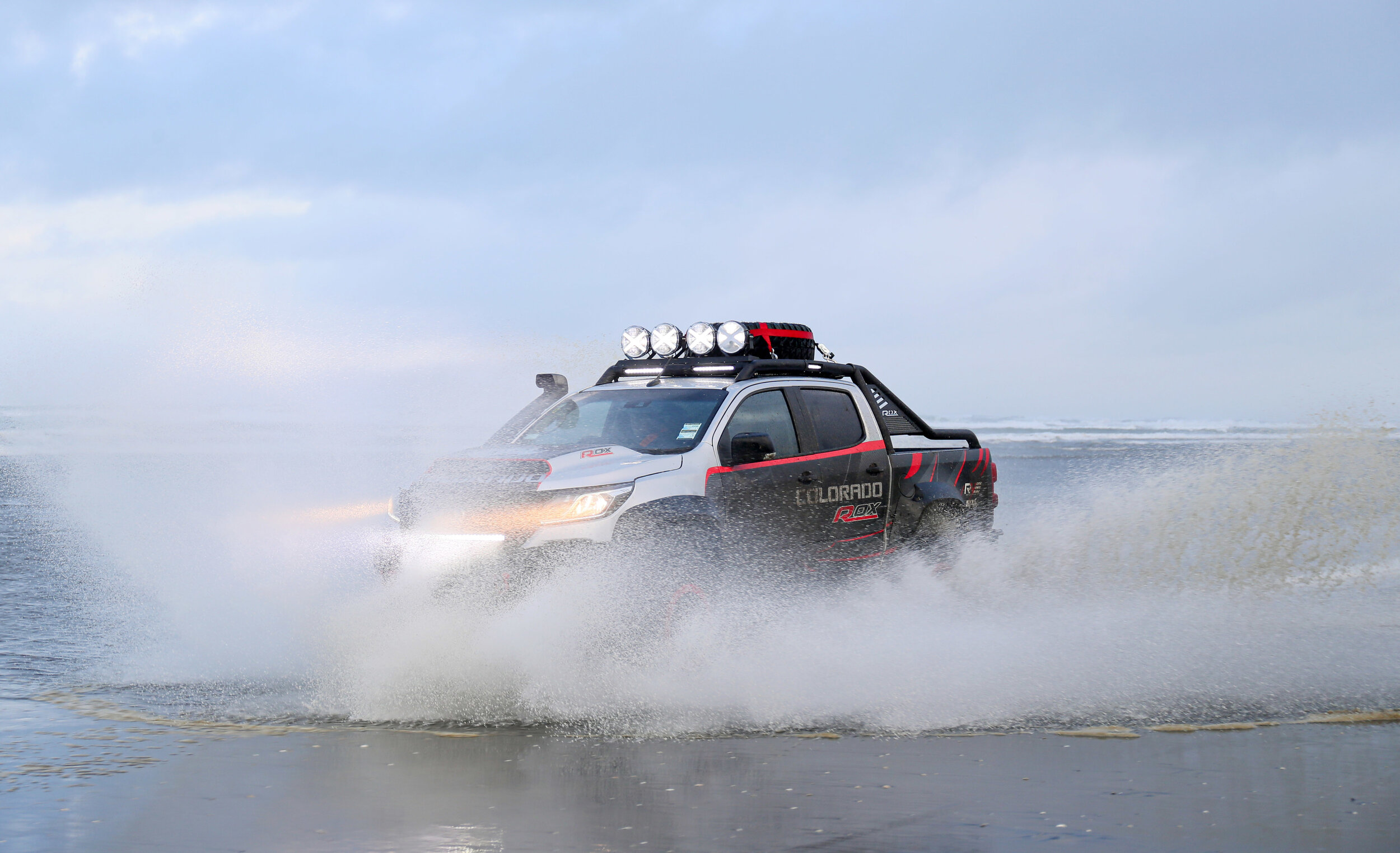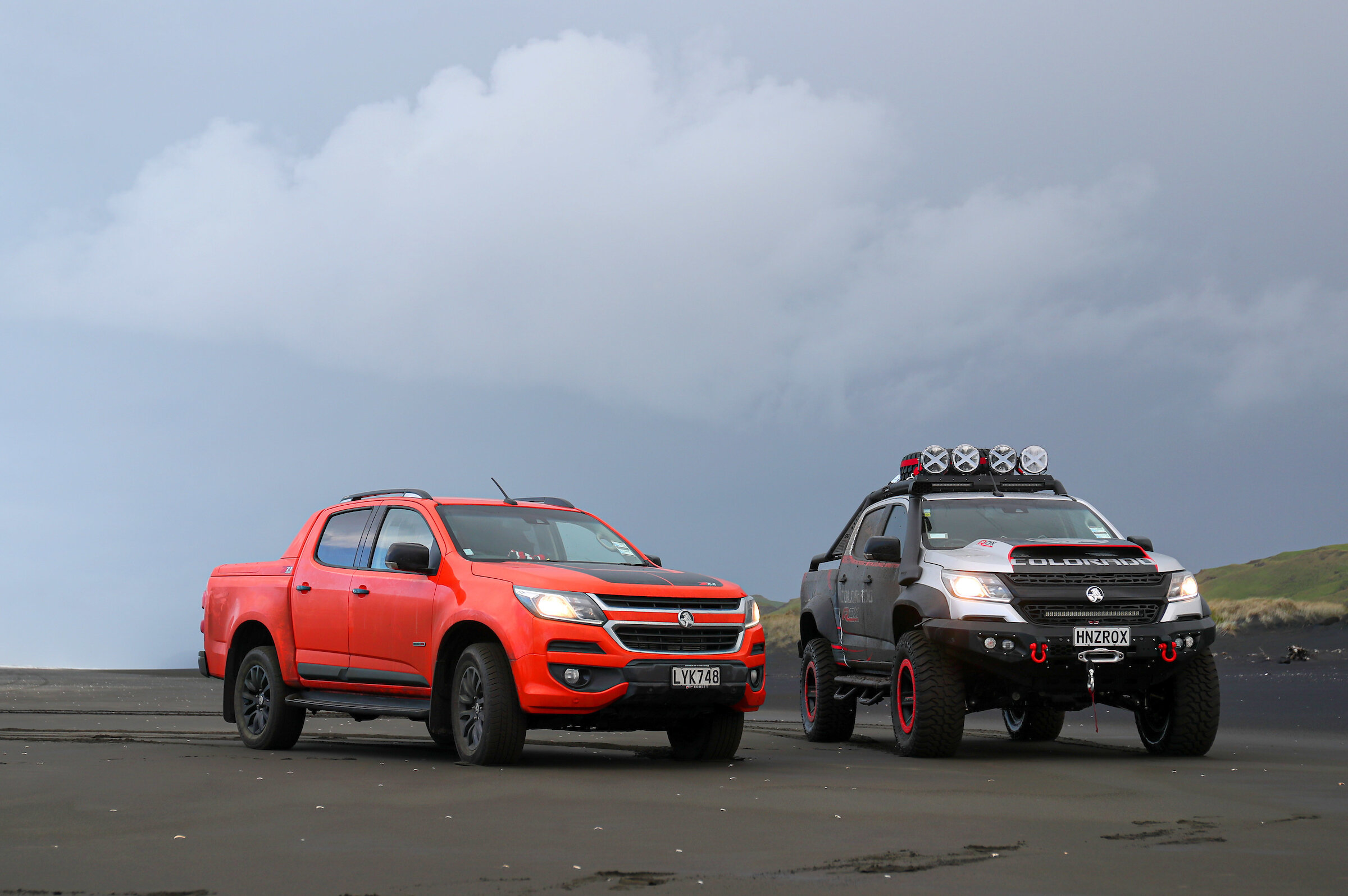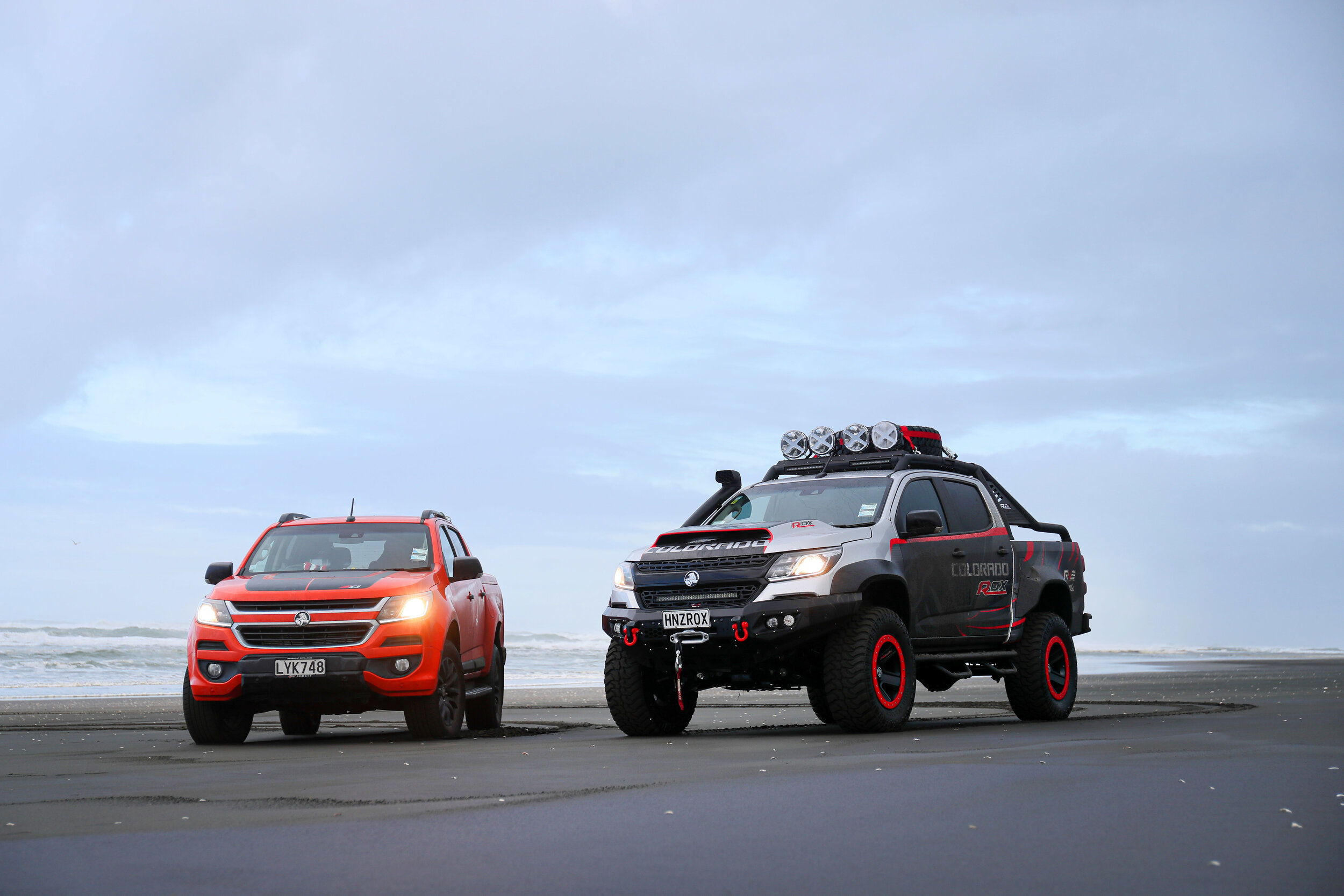Final farewell to an old friend
/Hope to bid a quiet and easy-going goodbye to Holden that with a run along memory road turned into a rush trip thanks to coronavirus.
At Holden NZ headquarters in Mangere East, Auckland.
START where it finished, end where it all began.
Signing off Holden’s time here with a roadie in its last press vehicle from brand headquarters to the birthplace of General Motors New Zealand, calling by places of relevance, seemed right.
That the ‘car’ is a one-tonner ute is no insult to a certain other: Commodore. A desultory ZB performance hasn’t kept Holden’s most famous car from being ensured perpetual place as the brand’s biggest breadwinner in this country. There’s just no argument, Commodore was, is and always will be remembered as Holden’s finest, most successful and, perhaps, most missed.
At same token, let’s not underestimate or devalue Colorado’s impact. It certainly also deserves dues for having been top dog in recent years, riding high on the crest of the ute sale wave. Not quite as high as the Ford Ranger and Toyota Hilux, agreed, but certainly doing well enough to bury the Mazda BT-50 and Nissan Navara and generally keep Mitsubishi’s Triton out of third spot on the sales sheets.
The last ride is being taken in the family-topped Z71 that has certainly benefitted these last few years from the massive Kiwi affection for well-detailed, high-end automatic turbodiesel double cabs.
The drive gives plenty of opportunity to reflect on why this particular variant is so deserving on a place at the pointy end of one of NZ’s most competitive segments. MFW45 enforces why the talent definitely reaches well beyond its initial attraction of a well-proportioned and tough-looking styling that has proven especially enduring – a saving grace given that ute lifespans are much older than for cars and, until the bombshell of Holden’s demise, this one looked set to stick around for at least two more years.
Would it have lasted the distance? I’m confident it would have. It especially benefitted from that MY17 mid-life facelift that, in hindsight, could be considered a life-altering moment for this line.
At Ebbett Holden, Taupo.
Continuing revisions that, for MY20, brought in leather-accented upholstery with heated front seats, a front bash plate, four black fender flares and a ‘soft-drop’ tailgate with gas struts have kept the pot on the boil. Nd though it will leave the scene with the suite of driver-assist systems still failing to tick off the increasingly important involvements of autonomous emergency braking, lane-keep assist, blind-spot monitoring or adaptive cruise control, it will still surely be remembered as Holden’s best work through this final chapter of the brand’s life story.
The high points, certainly, include the Holden-specific drivetrain. That 2.8-litre Duramax turbo-diesel four-cylinder unit producing 147kW of power at 3600rpm and 500Nm of torque at 2000rpm remains a tough act to follow. It’s not only been a relatively punchy unit, with a thick wad of torque coming on strong and early – so making it perfect for towing – but also a more refined engine than most of its key rivals. The six-speed torque-converter automatic is one of the best you can find in a ute, too; gear changes are smooth if not quick, while the calibration is receptive to spontaneous throttle inputs, with downshifts occurring promptly.
Holden’s involvement in tailoring Colorado’s ride and handling also deserves credit. The best evaluation of the magic performed is to hit a rugged road. Corrugations are a killer for so many utes – the manner in which they recklessly bounce over bumps when unladen can become, quite literally, a pain in the butt. The way Colorado maintains its composure, providing relatively superb ride comfort, in that environment is entirely due to tuning wrought over the Tasman, mainly at the Lang Lang testing ground near Melbourne.
In short then, the Colorado is a worthy candidate for this last chance to reflect on Holden and what it has meant to our country.
Retrieving the Z71 from Holden NZ’s digs, deep in the heart of an East Mangere industrial area, is how I wanted it, but accompanying corporate affairs manager Ed Finn upstairs for the keys feels awkwardly intrusive. A Covid-19 work from home option explains the empty desks now in this ground zero for February 17’s bombshell, Ed assures, yet knowing redundancy is now just weeks away for almost all the 40 staff, my mate included, is sobering. A team that has always batted above their average deserved better.
GM also deserves gratitude. It’s imprint into our national story is greater than many today probably know. GM was the first car brand with a proper car assembly plant here. It banged out 600,000 vehicles over six decades and employed thousands. When World War II broke out, it stood particularly tall, repurposing swiftly to build military equipment vital to our armed forces. Another major achievement: The Frigidaire division was responsible for introducing an everyday appliance into many homes, the fridge. For a while, Frigidaires were built alongside cars
Typical of best-laid plans, my honour run derails when I plot a course. Additional to this mission, I’m fulfilling a promise to help a pal in the Waikato who’s selling a model racing car collection to another friend, in my home district, the Manawatu, who is buying. In my mind’s eye, this won’t impinge on a primary mission ticking off dealer locales where the Lion has roared loud and long.
Even by choosing to skip Pukekohe, where the hugely entrepreneurial outlet here from 1921 to 1994 sold not only cars but, as the local funeral director, also caskets, I figure can surely at least hit Hamilton, home to Ebbett Group (founded in 1928 by Alf Ebbett and today Holden’s single-largest representative dealer body) then Te Awamutu’s Rosetown Holden, which opened one month before the 1987 stock market crash?
Smash Palace, Horopito.
Inputting the collection owner’s address changes everything. Sat nav shows his “near Hamilton” is nowhere close to that city nor my targets. If I’m to get home in reasonable time, the just-opened Huntly bypass section of the Waikato Expressway is my only choice.
The Ebbett connection is at least made in Taupo, where Holden didn’t represent until 1998, but it’s gone closing time, so after a quick snap for posterity, I’m off again, straight down the line.
Or not. The Desert Rd is closed. It’s way too warm for snow, so maybe something to do with talk about Ruapehu’s crater lake warming? I still don’t know.
Nothing for it but for me, Jim Clark, Jackie Stewart and Emmerson Fittipaldi to go the long way around, past the turn-off to Chateau Tongariro, then turning left onto State Highway 4 at National Park.
It adds an hour to the run, but at least allows the bucket list tick of Australasia’s largest vintage vehicle dismantler, Horopito Motors and Museum, aka ‘Smash Palace’. Stopping off on the sideroad that cuts through these hectares of rusting relics bathing in a sunset glow is a reflective moment. Even though I fail to spot any classic Holdens, assuredly this place holds a fair share. Even in the early evening, the place is a hive of activity. With wrecks being shuffled here and there by a JCB. Seeing two flattened early Falcons being moved is a satisfying ‘take that Ford’ moment.
Next few days are restricted to my home turf, but there’s more visiting to be done. Trucking to Manfeild Circuit Chris Amon recognises this being where our greatest Holden hero of motorsport, Greg Murphy, got his motorsport break, that big brand fans the NZ Police have conducted driver training here – predominantly in Holdens - since the ‘70s and that, in 1982, the GMNZ-made SS V8s that were then the world’s fastest and most powerful production examples also made their racing debut here.
To Whanganui, where when I grew up, Ian Wilks Motors was a big kahuna. The Holden franchise has long switched, but the original dealership building where I recall visiting as a kid to stare in wonderment at the Gemini capsule – and, later, as a teenager, the first concept car I’d ever seen (Giugiaro’s Ace of Clubs, which spawned the Isuzu Piazza) is still standing. The first Holden press car I ever drove, a Starfire VK, came through here.
Next day, I’m down at Palmertston North’s Robertson Holden. Reminiscence about the massive history of the Palmerston North-centred Robertson Group empire and how it started with lion-taming, 30 years ago, is not the sole reason for a visit. During the day I’ve discovered why the ute’s deck cover hasn’t been sitting quite properly. One of the latches is broken. Can my mates resolve this? A jury-rigged fix satisfies me, it’s not good enough for these pros. A replacement part is ordered under warranty.
Robertson Holden in palmerston north was swift to sort a small issue
By the weekend, coronavirus is the big and only news. Travel restrictions are impending. I resolve on waking that Sunday morning that, if I’m going to complete my mission as planned, today is the day. So, by 7.30am I’m off, heading across the Pahiatua Track to Masterton so as to clock Wagg Motors (NZ’s oldest dealership, Holden since 1972) then battling Rimutaka crosswinds to at last tread historic turf.
GM manufacturing based in the Hutt Valley, with 47 hectares of property, in two key zones, the first now requiring imagination.
There’s no trace of the Bouverie St factory whose production stream started with a four-cylinder Chevrolet car in 1926 and curtailed with a Bedford van in 1984. I imagine, but cannot be sure, it was probably located where the Mitre 10 Mega now stands.
Bouverie wasn't the first place where cars were assembled in New Zealand. Distributors had been bolting knocked-down kits together for years prior. Yet it stands as our first proper car plant – or as close as we ever came to having one (vehicles always came in CKD - for ‘completely knocked down’ - format to be locally assembled and painted, though local production did encompass making tyres, glass, wheels, seats and wiring looms) establishing 10 years before Ford set up shop, and also the first GM owned full-blown assembly line not on American soil that GM owned rather than leased.
Completed within eight months and rolling out the first vehicles even before an access road was completed, it initially assembled American GM vehicles - Chevrolet, Pontiac, Buick, and Oldsmobile - followed by British Vauxhalls, starting with the VX, five years later. It also produced those chunky Frigidaire refrigerators, this brand being owned by GM from 1919 to 1979.
By 1939 the factory was expanded for a total floor space under one roof of 2.4 hectares, nearly double the original space, fortuitously as it turned out as almost immediately after completion World War II began. The place very soon turned over to the war effort, producing Bren gun carriers, mortar bombs, metal radio cases and battery boxes. More than 900 US Army trucks from the South Pacific combat zone were also reconditioned there.
a quick stop at waggs in masterton is due, this being nz’s oldest holden dealership.
Following World War II, Vauxhalls continued to keep the plant running together with limited numbers (restricted by currency shortages) of Chevrolets and Pontiacs. Buick and Oldsmobile were dropped.
The site was cleared in 2004. It needs a plaque, if only to commemorate a famous employee, Jack the cat.
Twenty minutes later, I’m at the General’s second fortress, outwardly looking no different to as it appeared on the day it closed, save that now there’s a big mesh fence around the whole place.
Holdens hit NZ in 1954 and, indeed, we stand as Holden’s first (and most faithful) export market. Though just 321 FJs were shipped in by the end the first year of sale, 1954, some resourceful Kiwis had also by then also managed to secure a handful of the landmark 48-215 models as private imports. Interest in the brand grew quickly and GMNZ was in confident mood when, in 1957, the FE became the first of many Holden models to be assembled on NZ turf, at Bouverie. But demand then was always greater than the assembly line could meet.
Ultimately, GM took a deep breath and determined to create a much larger, utterly modern facility. So we got Trentham. Adjacent to the NZ Army’s camp and opened by Sir Keith Holyoake in 1967, this was a plant protecting market share equal to that enjoyed by today’s kingpin, Toyota NZ. With a total area of 41542 metres, Bouverie continued to impress as a large undertaking for the Petone area. But Trentham was so much bigger and grander. And could do so much more.
In its heyday Trentham was one of the country’s largest car plants and in the 1960s’ and 70s’, the Wellington area, with Todd Motors in Porirua and Ford (also in Petone), was in effect our ‘Motown’.
It made GM even more of the regional kingpin, with 47 hectares of property and around 930,000 square metres’ floor space, situated on three (Petone and Trentham: assembly/manufacturing plant, parts, and later, assembly, warehouse and office facilities) properties in the Hutt Valley.
Even when the Oil Shocks of the 1970s’ hit sales of large six- and eight-cylinder sedans (and influenced Holden to consider a smaller alternate to its HQ), and some Japanese brands – Mitsubishi, Datsun, Honda and Toyota – were starting to raise their profiles, Holden remained a hugely influential player.
GM was huge in the hutt valley and the trentham plant was its crowning glory
Commodore arrived in August of 1979 and triggered a sweet gold rush. From then until 2005, this Aussified Opel design consistently placed as a top three best-selling car in every year save for two. In that period, Holden NZ sold more than 100,000 Commodores. A four-cylinder SLX sedan built in May of 1982 was GMNZ’s 500,000th vehicle.
So what ended the dream? Government axing of import duty was a killer to all local assembly. On November 21, 1990, a V6 VN, the 593,945th GM product built here, marked the end of the line. GMNZ changed its name to Holden New Zealand and left the Hutt for good in 1999.
Commodore continued to do its maker proud, though. It held as one of the country’s top three sellers even when Holden was down to being the sixth most popular brand.
Perhaps you’re wondering how a Isuzu co-designed ute from Thailand fits this history? Well, GMNZ represented Isuzu; we took its cars and Colorado’s forebear, the Rodeo. They weren’t assembled at Trentham per se, but were certainly prepped there. Indeed, light trucks kept rolling down the line for seven years after it stopped assembling cars.
So the Colorado has every right to be here. And on this trip, it’s done the brand proud as total trouper.
Utes are built for toil, yet Z71 comforts have made it a good tripper for this exercise. For a model nearing the end of its build cycle regardless of what was going to happen to Holden, you wouldn’t say that age really has unduly wearied it.
I’d call it a keeper. A shame that events won’t allow it to be.
William Durant Drive, Trentham. Durant was a founder and first president of General Motors.


